[Published by New Sancai] The architectural heritage of the Islamic world is extremely rich. Here is a list of some of the most iconic mosques, palaces, mausoleums and forts:

△ India, Taj Mahal: In 1631, Maha, the third wife of Mughal emperor Shah Jahan (reigned 1628-58) and his favorite wife Mumtaz Mahal died giving birth to their 14th child. The emperor was distraught and ordered the construction of the Taj Mahal, a large mausoleum complex on the south bank of the Yamuna River that ultimately took more than 20 years to complete. Today, the Taj Mahal is one of the most famous Islamic buildings in the world, as famous as the Dome of the Rock in Jerusalem. Not only is the Taj Mahal majestic in size (the dome's spire rises 240 feet [73 meters] above the ground), but it is also a stunningly beautiful fusion of Indian, Islamic, and Persian design projects. The Taj Mahal contains monuments (fake tombs) to Mahar and Shah Jahan; the real tombs are located in the tombs on the ground floor.
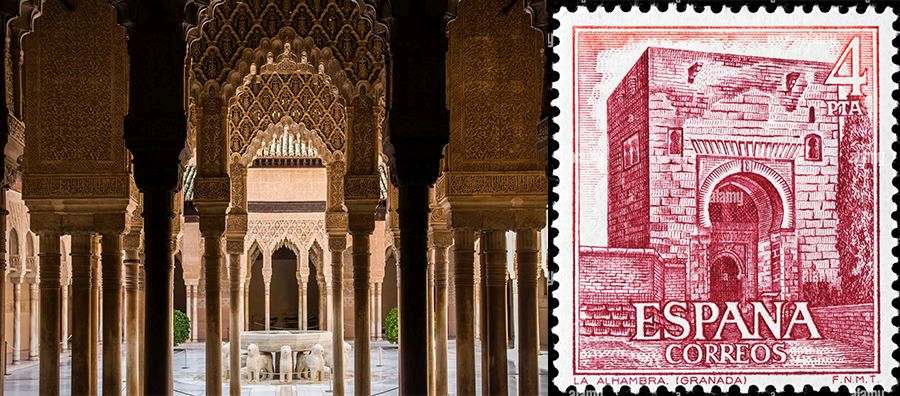
△ Spain, Alhambra: Located on a hill overlooking Granada, the Alhambra is a palace built by the princes of the Muslim Nasrid dynasty (1238-1492). A palace built in the 14th century. Although parts of the palace have been demolished, three parts remain: the Alcazaba to the west, a royal residence to the east, and the attics and gardens of the Generalife. The courtyards and rooms of the Alhambra are beautifully decorated with colorful tiles, carved stucco, carved wood carvings and artistic text. There are also striking patterns (called muqarnas) that decorate the halls of the Court of the Lions.
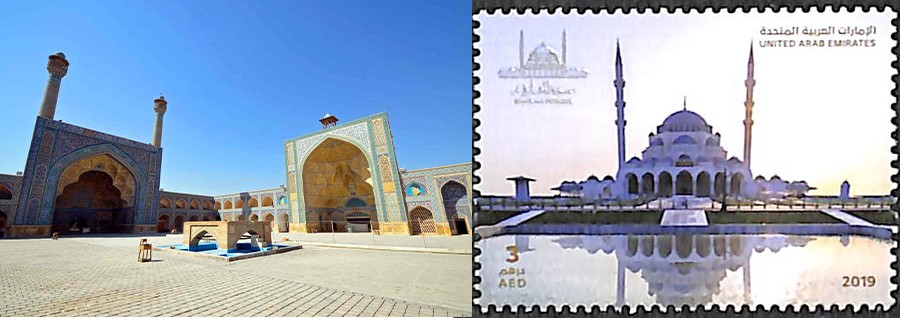
△ Iran, Friday Mosque: Esfahan is a city in Iran full of architectural treasures, with a huge Friday Mosque in its center. The mosque has stood here since the 8th century, but the oldest parts of the current building are the two domes built by the Seljuk dynasty, which ruled parts of Iran in the 11th century. At the beginning of the 12th century, the mosque was rebuilt around a rectangular courtyard with an iwan (a kind of hall that leads to a tall arch on one side) on either side. This design of four iwans first appeared in Isfahan and later became standard equipment in Iranian mosques.

△ Israel, Dome of the Rock: The Dome of the Rock in Jerusalem is the oldest existing Islamic monument and one of the most famous monuments. Built in 691-692 AD, some 55 years after the Arab conquest of Jerusalem, the mosque's design and decoration are rooted in the Byzantine architectural tradition, but also exhibit features later associated with Islamic architectural styles. The mosque consists of a gilded wooden dome resting on an octagonal base. The site is sacred to both Judaism and Islam; in the Jewish tradition, Abraham is said to have prepared to sacrifice his son Isaac here, while in the Islamic tradition, it is considered the site of Muhammad. The place where Muhammad ascended to heaven. The interior of the mosque is richly decorated with marble, mosaics and metal plaques.
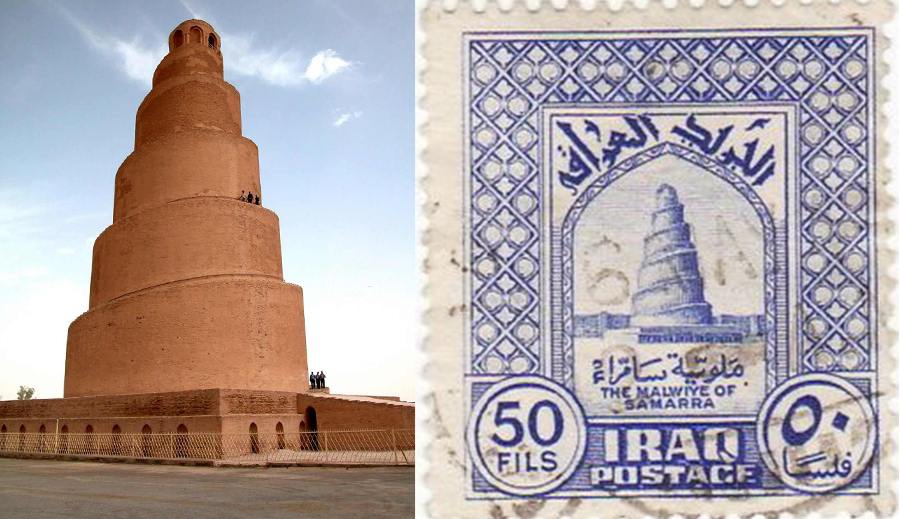
△ Iraq, Great Mosque of Samarra: The Great Mosque of Samarra was built around 850 by the Abbasid caliph Al-Mutawakkil (reigned 847-861). Built, it was probably the largest mosque in the world, with a total area of nearly 42 acres.
The mosque is built of burnt bricks and the interior is decorated with blue glass. During the Mongol invasion led by Hulagu in 1258, most of the buildings were destroyed, but one of the most striking structures survived, the 170-foot (52-meter-tall) minaret. It was conical in shape and It is surrounded by spiral ramps leading to the top. It is unclear why the builders chose a conical shape; some have noted that it resembles an ancient pyramid.

△ Aleppo Citadel, Syria: The most impressive architectural works in the Middle East can be found in medieval fortresses in cities such as Cairo, Damascus and Irbil. Archaeologists have discovered fortifications here that date back to the Roman era or even earlier. Some were built in the 10th century and were massively expanded and expanded during the Ayyubid era (about 1171-1260). The current appearance was formed during reconstruction. Within the castle walls were residences, storage rooms, wells, mosques, and defenses—all the facilities needed to withstand a long siege. The most imposing part of the complex is the large entrance, built around 1213, with a steep stone bridge spanning the moat (now dry), and two towering gates, the Serpent Gate and the Lion Gate. To enter the castle, invaders had to pass through two gates and pass through a winding passage, while the defenders doused them with boiling liquid and rained down arrows from above on them from numerous arrow holes.
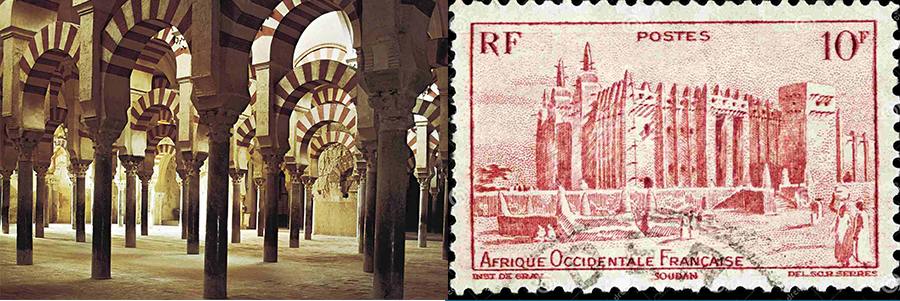
△ Spain, Great Mosque of Córdoba: The earliest part of the Great Mosque of Córdoba was built by the Umayyad ruler Abd al-Rahman I. I) Built in 784-786 on the site of a Christian church. The building underwent several expansions in the 9th and 10th centuries. During one of the expansions, a richly decorated niche was added behind intricate arches. Another feature of the mosque is the polycoid hall, which consists of approximately 850 columns made of porphyry, jasper and marble, supporting two levels of horseshoe-shaped arches. Most of the columns and capitals were recovered from earlier buildings.
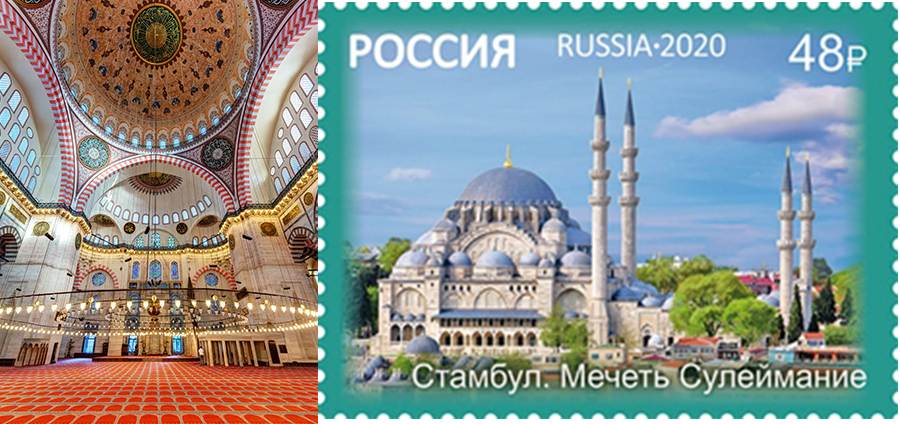
△ Turkey, Suleymaniye Mosque: One of the most prominent features of the Istanbul skyline is the towering dome and minaret of the Suleymaniye Mosque complex, which stands overlooking the Bosporus. ) on the artificial platform. The mosque was built by Suleyman the Magnificent, emperor of the Ottoman Empire, between 1550 and 1557, when the Ottoman Empire was at its peak. It is the largest and most beautiful royal mosque complex in Istanbul. The interior of the mosque is a square room with more than 100 large windows, many of which are stained glass windows. The decoration is simple and does not distract from the central dome, which is 90 feet (27.5 meters) in diameter. The mosque is surrounded by a hospital, several religious schools, a row of shops, a mausoleum and a bath house. The complex was designed by Mimar Sinan, a master architect of the Ottoman Empire. Both Sinan and Suleiman are buried in this complex.
(Author: Noah Tesch)
(Compiled by: Bai Ding)
(Editor: Jiang Qiming)
(Source of the article: Compiled and published by New Sancai)
